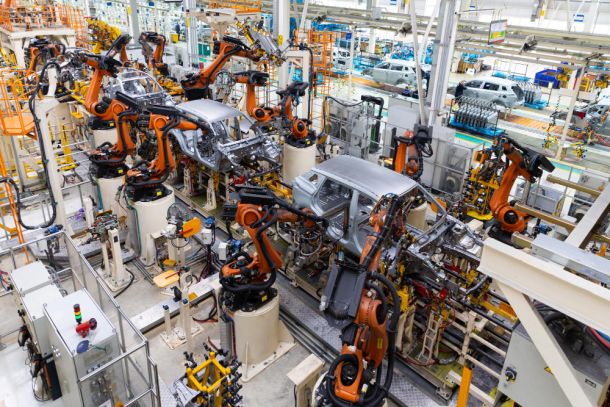Understanding Interactive Work Instructions
The future of work is interactive.
Workers face increasingly complex tasks, and businesses are always on the lookout for ways to improve efficiency, reduce errors, and streamline processes. One powerful tool that has emerged to address these challenges is interactive work instructions.
Interactive work instructions (IWI) are reshaping industries by empowering workers with instant, personalized guidance. IWI belong to the world where complex tasks are simplified, training time is slashed, and errors are virtually eliminated. This is the reality that interactive work instructions bring to life. By seamlessly blending digital technology with hands-on learning, IWI drive higher quality, faster production, and a more engaged workforce.
What Are Interactive Work Instructions?
Interactive work instructions are digital documents designed to provide step-by-step guidance for workers during specific tasks. But they go beyond the static checklists or manuals of the past. These instructions are often equipped with visual aids like photos, diagrams, or videos, and they interact with the user, tracking progress, offering reminders, and even correcting mistakes in real time. Think of them as an intelligent assistant available to guide workers through complex tasks, ensuring they have all the necessary information at their fingertips.
Imagine a technician tasked with assembling a new type of engine component. Using interactive work instructions on a tablet or smartphone, they can view every step of the process visually, receive alerts if they deviate from the required sequence, and document each stage digitally. These features make interactive instructions a valuable asset in sectors where precision is paramount, such as manufacturing, healthcare, and field service.
The Advantages of Interactive Work Instructions
The benefits of interactive work instructions are substantial. They offer more than just detailed directions – they’re a bridge between knowledge and practice, effectively reducing errors and enhancing understanding. Here’s how they make a difference:
1. Enhanced Training and Onboarding
Traditional training methods can be time-consuming and often require a hands-on trainer to guide new employees through tasks. With interactive work instructions, employees can follow guided steps with visual aids, drastically reducing the time needed to learn complex processes. This is particularly useful in industries with high turnover rates, where time spent training each new employee can accumulate quickly.
A factory where employees assemble a wide variety of products can benefit from interactive instructions. These instructions automatically update based on the task, minimizing the need for memorization and allowing employees to start working efficiently with minimal supervision.
2. Reduced Errors and Improved Quality Control
Human error is inevitable, but its frequency can be greatly reduced by providing workers with the right information at the right time. Interactive work instructions make it easy to check that each step has been completed correctly before moving on. This method also allows supervisors to track compliance and adherence to procedures in real time, ensuring quality control is maintained at every stage.
For example, in the pharmaceutical industry, where strict adherence to safety protocols is essential, interactive work instructions can prompt workers to verify critical steps, such as ensuring the correct quantity of each ingredient is used. This system not only reduces the risk of error but also provides an automatic audit trail.
3. Increased Productivity and Reduced Downtime
IWI can dramatically improve productivity by eliminating the need to constantly refer back to printed manuals or search for information. With the instructions readily accessible on devices, employees spend less time looking for guidance and more time focused on the task. Additionally, interactive instructions can notify workers when they are about to make a mistake, helping to prevent disruptions before they occur.
Consider an electronics assembly line where each product has a different wiring configuration. With interactive instructions, workers don’t need to memorize each setup. Instead, they receive the specific configuration needed for each item, saving time and reducing errors. This continuous flow means fewer interruptions and increased output.
Real-World Applications: Bringing Interactive Instructions to Life
Let’s look at some scenarios where interactive work instructions are making an impact:
Automotive Manufacturing
Automotive assembly lines are complex, with thousands of parts and processes involved in building a single car. By implementing interactive work instructions, automotive manufacturers can reduce the training period for new workers and improve precision on the line. For example, when assembling a door, a worker might receive instructions specific to the car model, with prompts for attaching components in a specific sequence. The instructions can detect if a step has been skipped and alert the worker, avoiding costly mistakes later on.
Field Service Technicians
Field service technicians often work off-site, where they may not have easy access to training resources or expert advice. Interactive work instructions provide them with all the information they need right on their mobile devices. For example, if a technician is dispatched to repair an air conditioning unit, they can follow an interactive guide tailored to the specific model. With detailed visuals and live prompts, they can identify issues and fix them more quickly, even if they have never worked on that model before.
Food Production
The food industry has strict standards for quality and hygiene. Interactive work instructions help ensure that each step in food preparation is followed correctly, minimizing the risk of contamination or mistakes in ingredient measurements. For example, a bakery might use interactive instructions to ensure that workers follow recipes precisely, preventing batch-to-batch inconsistencies and reducing waste. Each step of the process is verified before moving to the next, maintaining a high level of quality.
Overcoming Challenges in Implementation
While the benefits of interactive work instructions are clear, some challenges can arise when implementing them. For companies accustomed to traditional paper-based methods, transitioning to a digital platform can be daunting. Employees may need time to adapt to new technology, and companies may need to invest in mobile devices or tablets for workers to use.
However, these challenges can be addressed through careful planning and a phased approach. Companies can start by implementing interactive instructions in one department or for a single process, collecting feedback and making improvements before expanding the system company-wide. Additionally, the initial costs are often outweighed by the long-term gains in productivity, reduced training time, and error prevention.
The Future of Interactive Work Instructions
As technology continues to advance, interactive work instructions will become even more powerful. So, augmented reality is already a thing. AR work instructions superimpose digital information, such as 3D models and step-by-step guides, onto the real world. This technology reduces errors, boosts efficiency, and enhances learning by providing real-time, hands-on guidance. The instructions are becoming more and more intuitive.
Additionally, AI and machine learning can be integrated to personalize instructions based on each worker's behavior. This allows for tailored feedback and recommendations. Such an instruction system not only guides workers but also learns from their actions, optimizing future tasks for even greater efficiency.
Conclusion: A Smarter Way to Work
Interactive work instructions represent a new approach to workplace productivity, bridging the gap between digital innovation and practical application. They provide workers with the guidance they need to perform complex tasks accurately and efficiently, while also giving businesses the tools to monitor quality and productivity in real time. As more industries adopt these systems, we can expect to see significant improvements in efficiency, training, and quality control.
Interactive work instructions are more than just a modern technology; they're an investment in people. Empowering employees with these tools allows them to focus on their strengths and achieve their full potential.












